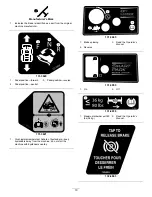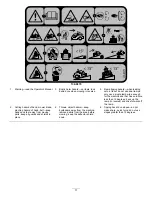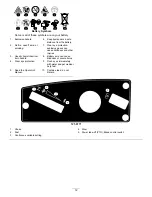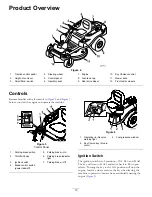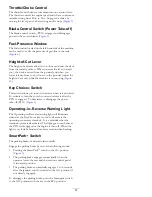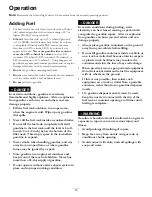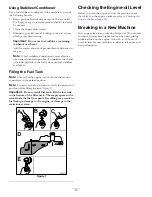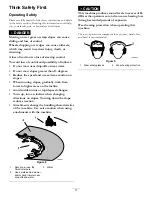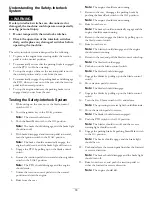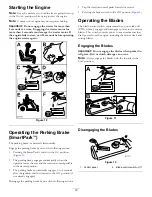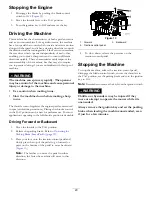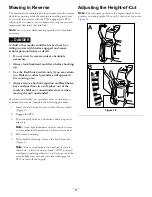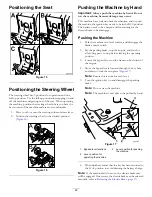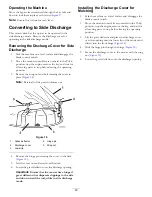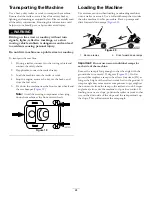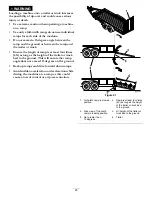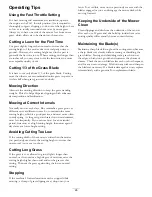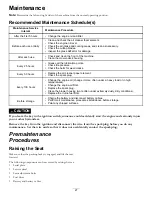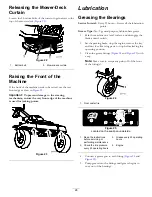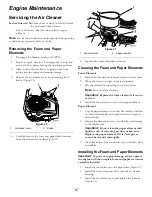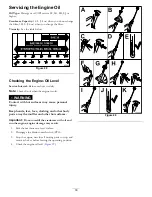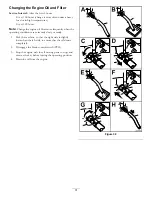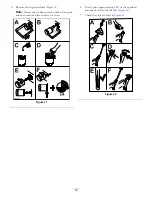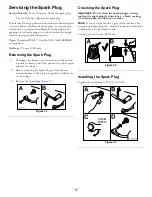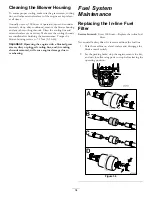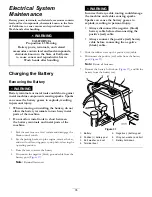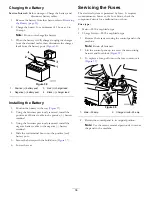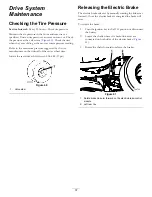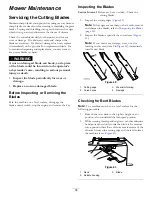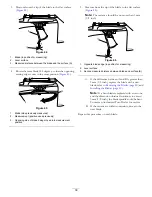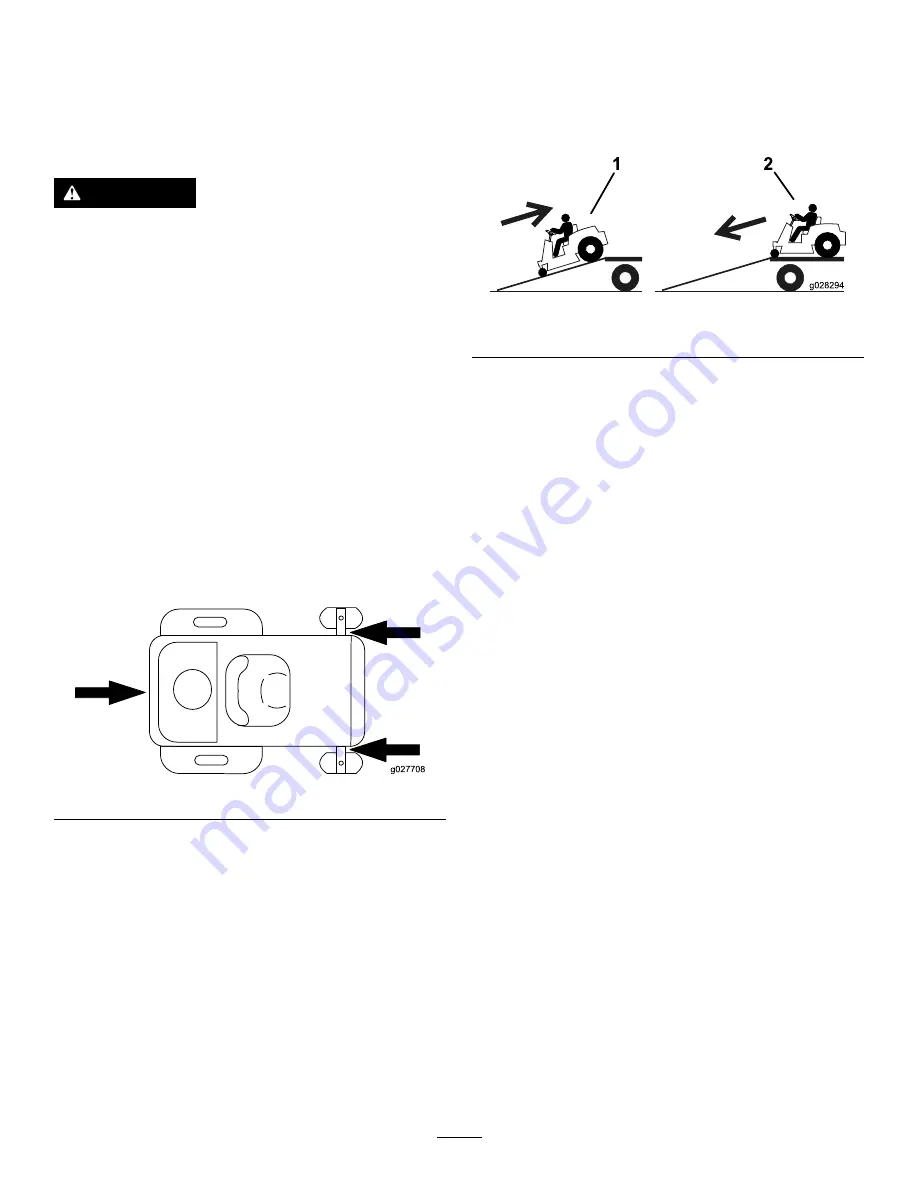
Transporting the Machine
Use a heavy-duty trailer or truck to transport the machine.
Ensure that the trailer or truck has all necessary brakes,
lighting, and marking as required by law. Please carefully read
all the safety instructions. Knowing this information could
help you, your family, pets, or bystanders avoid injury.
WARNING
Driving on the street or roadway without turn
signals, lights, reflective markings, or a slow
moving vehicle emblem is dangerous and can lead
to accidents causing personal injury.
Do not drive machine on a public street or roadway.
To transport the machine:
1.
If using a trailer, connect it to the towing vehicle and
connect the safety chains.
2.
If applicable, connect the trailer brakes.
3.
Load the machine onto the trailer or truck.
4.
Stop the engine, remove the key, set the brake, and
close the fuel valve.
5.
Tie down the machine near the front caster wheels and
the rear bumper (
).
Note:
Avoid the steering components when tying
down the machine at the front caster wheels.
Figure 19
Loading the Machine
Use extreme caution when loading or unloading machines
onto a trailer or a truck. Use a full-width ramp that is wider
than the machine for this procedure. Back up ramps and
drive forward down ramps (
).
Figure 20
1.
Back up ramps
2.
Drive forward down ramps
Important:
Do not use narrow individual ramps for
each side of the machine.
Ensure the ramp is long enough so that the angle with the
ground does not exceed 15 degrees (
). On flat
ground, this requires a ramp to be at least four times (4X) as
long as the height of the trailer or truck bed to the ground. A
steeper angle may cause mower components to get caught as
the unit moves from the ramp to the trailer or truck. Steeper
angles may also cause the machine to tip or lose control. If
loading on or near a slope, position the trailer or truck so that
it is on the down side of the slope and the ramp extends up
the slope. This will minimize the ramp angle.
24

